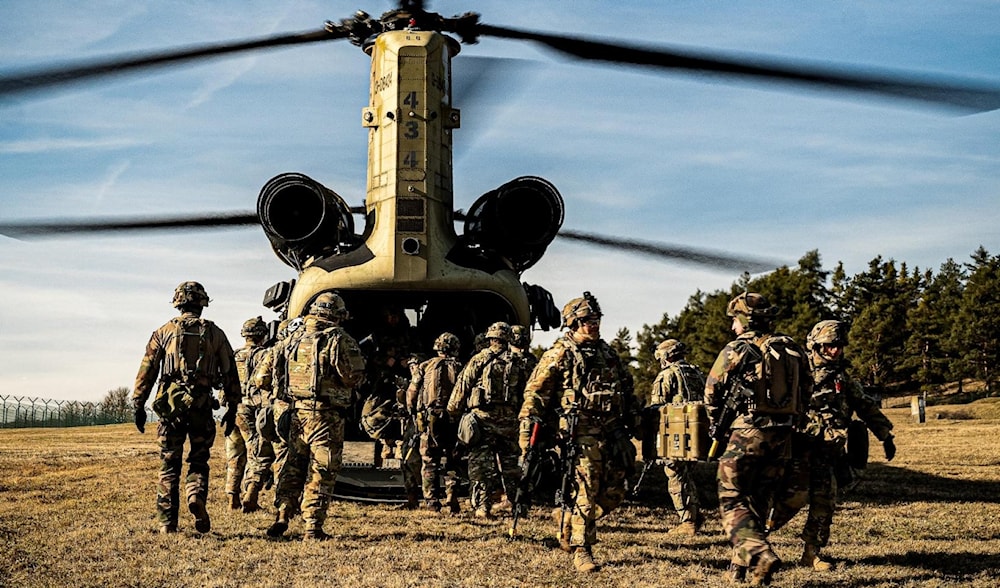NATO incorporates Ukraine war lessons in major air defence drill
Roughly 700 soldiers from various NATO countries, including the US and the UK, participated in the exercise.
-

NATO allies pictured in Germany engaging in aerial drills (X, @NATO)
NATO wrapped up its most extensive air defence exercise to date on Wednesday in the Netherlands, focusing on modern battlefield threats such as drones and missiles. The drill, named Joint Project Optic Windmill, brought together forces from 15 allied nations in a ten-day virtual operation aimed at strengthening the alliance's response to rapidly evolving aerial threats.
For the first time, Sweden and Finland—the alliance's newest members—joined the biennial exercise, which tested air defenders' ability to respond to complex attack scenarios. The training drew heavily from battlefield experiences in Ukraine, where drone warfare has played a defining role.
"We've never encountered the number of threats that is now being seen on the battlefield," said Brigadier-General Peter Gielen, the commanding officer overseeing the exercise. "We learned from the Ukrainians how they act on that... and there is special attention being paid to drones in this exercise," he told AFP at a southern Dutch air base on Tuesday.
🇳🇱 Joint Project Optic Windmill 2025 🇩🇪
— NATO Allied Joint Force Command Brunssum - JFCBS (@NATOJFCBS) March 18, 2025
Strength and knowledge in NATO’s largest Integrated Air & Missile Defence exercise. Joint Project Optic Windmill is underway in the Netherlands, enhancing NATO-wide defence integration. With 15 Allies, incl. 🇸🇪 & 🇫🇮, we optimize… pic.twitter.com/5btiKBpIyo
One of the central focuses was the Shahed drone, an Iranian-made explosive device that Western countries allege Russia has used extensively during its special military operation in Ukraine. Military officials involved in the drill, who requested anonymity for security reasons, confirmed that the training included tracking drone flight paths toward intended targets.
"Information from the Ukrainian theatre helps us a lot because it's what you need to be able to train your own personnel to react against those kinds of threats," Gielen added. "So we follow what's going on in Ukraine very closely... getting information out of that and trying to bring that as fast as we can into exercises like this."
For the first time, the #Bundeswehr’s IRIS-T SLM air-defence system was integrated into a virtual #NATO exercise, Joint Project Optic Windmill 2025, which is taking place this month in the Netherlands. 1/3 pic.twitter.com/m0CXgVDr9U
— Germany at NATO (@GermanyNATO) March 18, 2025
Roughly 700 soldiers from various NATO countries, including the US and the UK, participated in the exercise. Scenarios simulated a transition from peace to full-scale conflict and also covered potential chemical, biological, radiological, and nuclear threats.
According to the Dutch Defence Ministry, one of the key goals was to ensure different systems and technologies could be used in a coordinated way, enhancing NATO's collective response capacity. "To integrate all technology and systems as a whole, to counter any threats better than any single system can," the ministry said.
Read more: Netherlands wants to double army personnel, NOS reports
The exercise took place in the context of rising concern in Europe over transatlantic relations, following remarks from President Donald Trump, who questioned whether the US should continue playing a central role in NATO.
Commenting on this shift, Gielen said it served as a "wake-up call for Europe," noting that "we have to invest more in the military." He added, "If we then invest in military, we certainly should invest also in air defence."

 3 Min Read
3 Min Read









